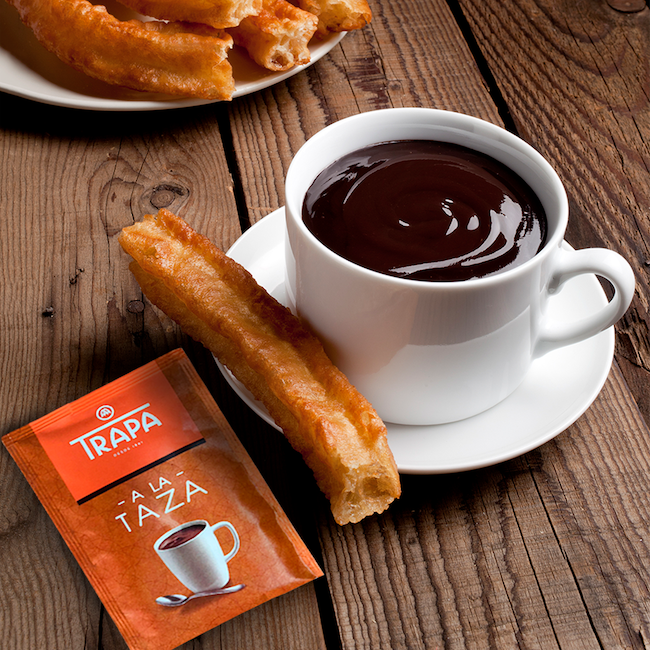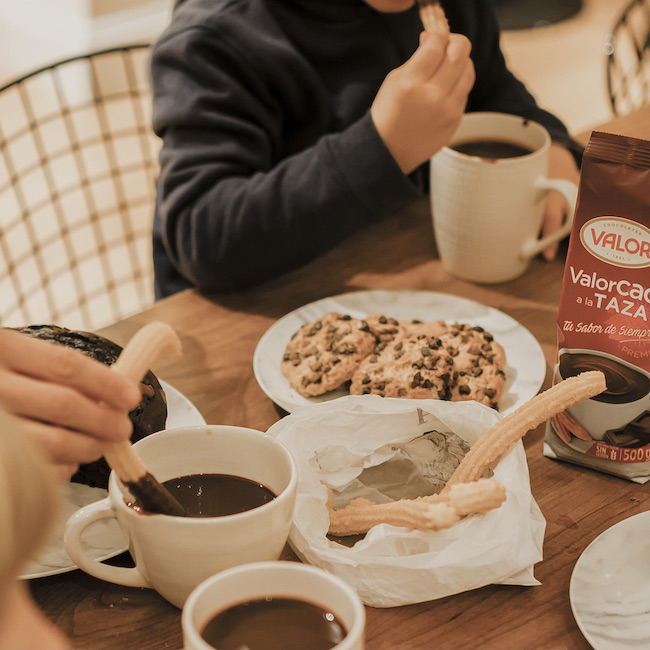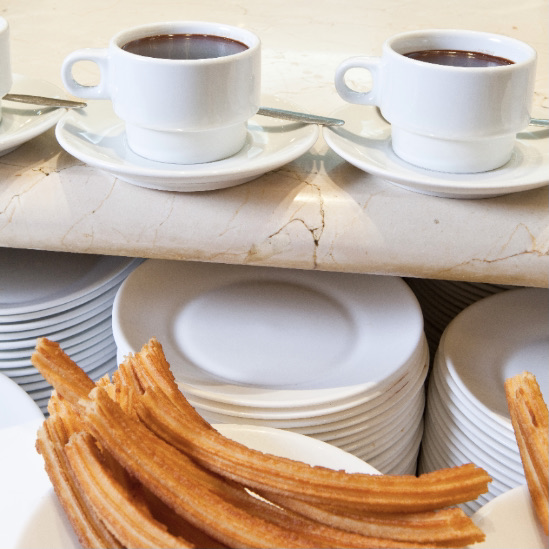.png.transform/rendition-xs/image_image%20(1).png)
Chocolate With Churros, a Sweet Antidote for the Cold
There's no other breakfast or snack that's more Spanish than a good cup of drinking chocolate: an art that many companies market in the form of bars to make at home
Wandering around any afternoon in fall or in November through the center of a large Spanish city or capital means coming across chocolate shops and churrerías where you can enjoy one of the most typical snacks: chocolate with churros (a long-shaped dough made from water, flour and salt and fried in oil.)
Although chocolate has become part of the world's heritage, it originated in America and arrived in Europe after Hernán Cortés brought it back to Spain. Consumption, initially reserved for the upper classes, became popular over the years and, among the different ways of eating it, one of the most popular was a la taza.
The British Reverend Joseph Townsend noticed the popularity of chocolate a la taza in his book A journey through Spain in the years 1786 and 1787, published in London in 1792. Townsend said that "one advantage of inns in Spain, to compensate for their many difficulties, is that however bad they may be, one is always sure to find good chocolate there."
Chocolates Trapa, a company whose origins lie in the Trappist Monastery of San Isidoro, located in the town of San Isidro de Dueñas (Palencia in Castile and León), has been making chocolate bars since 1891: "At that time, it was the most widely consumed product. Today, we still have that recipe and others that we have used as the basis for our current products," explains Ángel Amador, the company's Marketing and Communications Director. Their chocolate bar is made from sugar, fat-free cocoa powder, cornstarch, and vanillin.

Dissolved in water or milk
Chocolate a la taza is made by dissolving the chocolate bar (made from cocoa paste, sugar, and flour) in water or milk. The traditional method, known as a la Española, consists of dissolving it in water so that the result is a drink with a thick consistency, almost like a cream. Over the years, dissolving it in milk has become more widespread, making the result thinner and softer.
Another chocolate maker that stands out is Valor, which has been making cocoa products for more than 140 years. "One of our first products was chocolate a la taza and we still use the original recipe today." Among the ingredients are: sugar, cocoa paste, rice flour, cocoa butter... And of all the ingredients, at least 38% is cocoa. "We need to prepare it like our parents and grandparents did, grating the bar and melting the chocolate shavings in a small saucepan with milk or the vegetable drink of your choice.”
“As you prepare it, the whole room will be flooded with the aromas of good cocoa," according to Valor. Amador, from Trapa, explains that it's important to "mix it evenly, using a spoon, until it is completely diluted without any lumps."

Valor has also created a version of soluble cocoa powder (Valorcao) for people who don't have time to dissolve the chocolate bar. It's available in several versions: original, intense, and with a % of added sugars. In this case, you just need to "add several spoonfuls of Valorcao powder until you achieve the desired thickness, and stir vigorously. In a few minutes, your drinking chocolate will begin to have that characteristic thickness and can be enjoyed on its own or with churros, sponge cake..." Their chocolates are available in "about 60 countries, many of them in Europe." However, they recognize that their main markets are "Chile, Canada, and the USA." When you buy one of their products, you can ensure that your kitchen will be filled with aromas that transport you to a breakfast or afternoon snack in Spain.
Churros, the traditional partner
While chocolate can go hand in hand with toast, cookies, or sponge cake, churros are truly the perfect match. This Spanish recipe is prepared with a lightly salted flour dough, to which boiling water is added. The dough is then passed through a machine that gives the churros their characteristic shape before being fried in very hot oil (at a temperature of around 180ºC/ 360ºF) for about two minutes.

In addition to making chocolate, Valor also has a network of chocolate shops throughout Spain where they make their own churros. They serve a variety called tejeringo, typical of southern Spain, which differ from the usual churros in that they're round, don't have a ribbed exterior, and are spongy on the inside and crunchy on the outside. Another variety is porras, which are larger and wider than the average churro and are also spongier as they have more air inside. They're also made using baking powder, unlike churros.
Although this may sound very traditional, the Spanish custom of drinking chocolate a la taza has also been added to some of today's great chefs' repertoires. Jordi Roca, pastry chef at El Celler de Can Roca, for example, offers drinking chocolates in his Casa Cacao project (Girona), with options such as the chocolate and chestnut milkshake and chocolate granita, made with 70% Piura cocoa. Because a good drinking chocolate never goes out of style...

